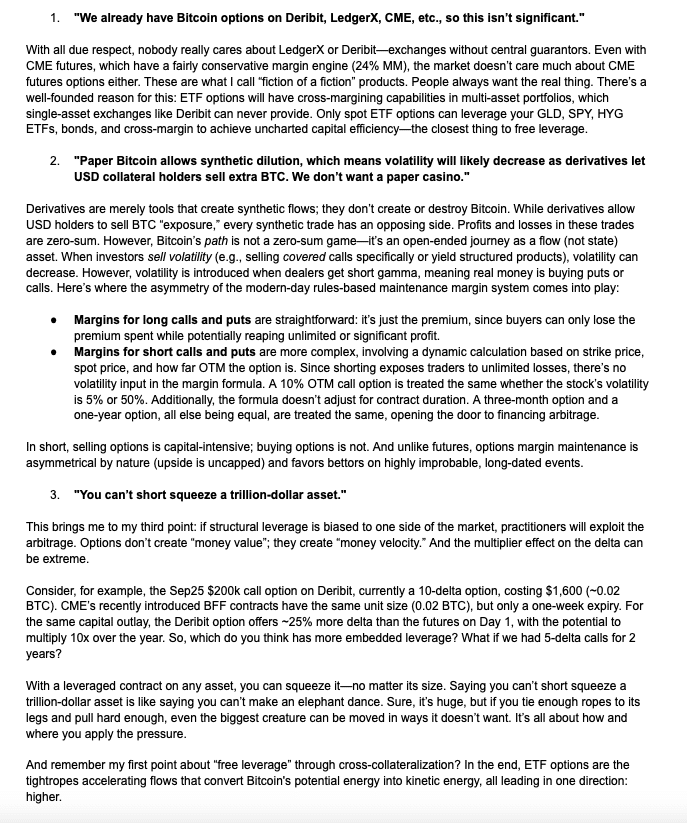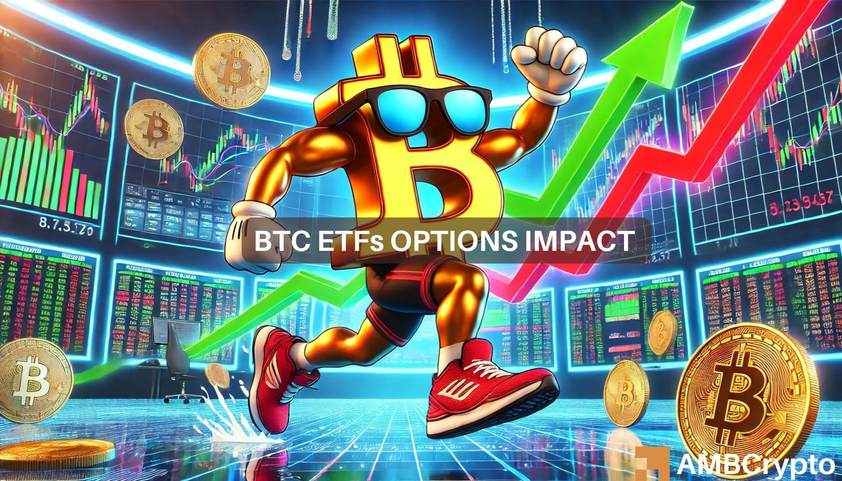- Analysts agreed that US BTC options could inject more liquidity into the BTC markets.
- But there were divided opinions on the volatility and long-term price impact.
Market comments mounted as the regulator approved more US spot Bitcoin [BTC] ETF options.
On October 18, the US Securities and Exchange Commission (SEC) gave the green light for the products on the market. NYSE (New York stock exchanges) and Cboe (Chicago Board Options Exchange).
NYSE American was given the green light to offer options for Fidelity’s BTC fund, FBTC, and ARK 21Shares’ ARKB. Meanwhile, Cboe will trade Grayscale’s GBTC, mini BTC and Bitwise’s BTIB.
This approval follows the recent approval of BlackRock’s IBIT options.
So, what is the potential impact on the BTC market and price?
Mixed opinions on US BTC ETF options
According to some analysts, this could set the pace for additional volatility and greater liquidity in Bitcoin.
For context, options allow professional traders to speculate and employ risk management strategies (hedging) without owning the underlying BTC assets.
Last month, after approving the IBIT options, Anthony Pompiliano, a BTC investor, said declared that it would reduce BTC’s volatility and limit its upside potential.
“The approval of options on Blackrock’s Bitcoin ETF will lead to greater institutional adoption of the asset, which will reduce volatility and limit Bitcoin’s explosive upside.”
However, Jeff Park from Bitwise viewed the approval as a net positive for BTC’s volatility, liquidity, and price. He countered what he said was a flawed view of US BTC ETF options.


Source:
Park’s sentiment was echoed by most of the analysts who shared their thoughts with The Block.
Ed Tolson, CEO of Kbit, stated:
“Institutional market makers, who are expected to take the other side of this trade, are likely to be short. This means they may have to buy when the price rises and sell when the price falls, potentially increasing volatility.”
However, Michael Harvey, head of franchise trading at Galaxy Digital, predicted a spike in volatility in the short term, which could be reduced in the long term.
“We expect that initially the number of retail traders will exceed the number of institutions, which could increase volatility. Over time, if institutions adopt return-generating strategies such as sales volatility, this could dampen the overall volatility we see today.”
Harvey’s view on volatility mirrored Pompiliano’s projection.
In conclusion, analysts were confident that the approval would inject more liquidity into the BTC markets.
However, there were mixed views on the volatility and price impact in the short and long term.

